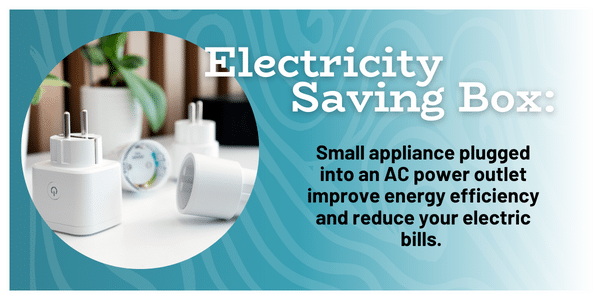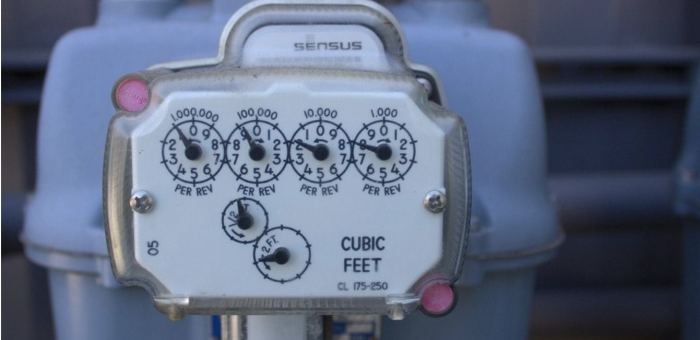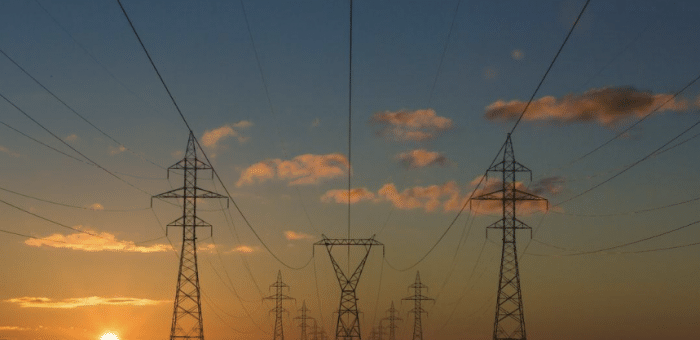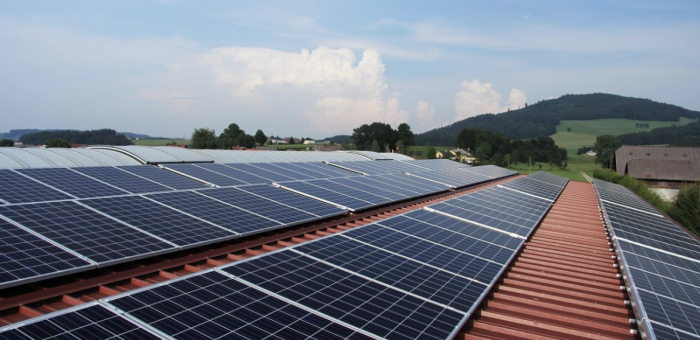Are you frustrated about the current high fuel prices? While natural gas generates about 40% of electric power in the U.S., you can anticipate a rise in your electricity bills. In January 2021, the national average household electricity rate went up by 8%, the highest increase ever in this decade.
Power Wizard recommends taking control of your energy usage by implementing measures that cut your utility cost. The electricity saving box is one household appliance that keeps popping up in energy saving efforts. Here is some insight into the efficacy of an electric-savings box as well as alternative methods for reducing power consumption and saving on your electricity bill. Not only do we recommend taking measures in the home, but examining your latest electric bill should always be a top priority. Ignoring your electric bill and leaving it as a ‘set it, and forget it’ could cost you hundreds per year!
Is an Electricity Saving Box a Real Energy Saver?
A power saver device is a small appliance plugged into any Alternating Current (AC) power outlet to improve energy efficiency. As a consumer, you have a right to think, does the electricity saving box work? Read on to find out the truth behind power saving boxes.
Companies claim you can cut down 25-40% of your electricity bills by simply plugging in the appliance. The energy saving box is made of a system of capacitors that help stabilize the electricity in your home. The electricity flowing throughout your home often experiences rises, falls, and surges in the current.
Your electricity saving box stores the electricity in the capacitors and releases it in a smooth output without any surges. Manufacturers further claim that the energy saver device uses an active power factor correction to reduce domestic electricity consumption and waste. The concept is valid and legally accepted. To better grasp the device’s practicality and ability to save energy, you need to understand these three things when it comes to decoding power terminology..
- Type of electrical load (resistive and capacitative).
- Key electrical phrases like kilowatt (kW), reactive power (KVAR), and apparent power (KVA).
- The formula electric companies use to calculate electricity rates for residential, commercial, and industrial consumers.

Every house has two main loads: resistive devices like heaters and lamps and capacitive or inductive appliances like computers, refrigerators, and air conditioners. Resistive loads have one power factor, while capacitive loads may have less than one power factor. The inductive or capacitive loads store energy and release about 50 or 60 times per second on every AC cycle, lowering the power factor.
In the mentioned basic power terminology:
- kW represents real power. It is the actual energy you use to perform tasks using household appliances and is recorded in your utility meter box.
- The reactive power is measured in KVAR. Domestic consumers don’t pay for KVAR like kW as they don’t use it in doing work. Household meters don’t record their usage.
- Apparent power or KVA. To get this reading, you need to multiply your voltage and current readings.
The power factor (PF) is determined by dividing the real power by the apparent power, and the figure ideally needs to be 1. A PF of 1 describes clean and efficient household power usage. If the PF is less than 1, then the power usage of your electrical devices has increased. The electricity saving box helps solve the lag and fluctuating problem in capacitive or inductive loads, improving the appliance’s net PF.
The electric utility bills you pay are based on real power, not apparent power. The electric company calculates your real power in kilowatts by multiplying the apparent power by the power factor. You can also determine the real power by multiplying the voltage by the current in amperes and the power factor.
What Benefits Does It Offer?
As per the manufacturer, your electricity saving device helps minimize energy loss by actively correcting the power factor. The device achieves stable voltage by smoothing any erratic flow of electric current in your home. The fluctuating current goes to waste by converting into heat energy and dissipating into the environment.
Electrical overheating further poses a serious risk to your household appliances. The device also eliminates carbon from the circuitry to further improve your power quality. While minimizing energy loss, the device also ends up preventing power surges.
Electric surges reduce the service life of electronic appliances and are a leading cause of electric fires.
Consider employing a wholesome surge protection strategy to protect your residence from electric surges. The strategy will involve using point-of-entry and point-of-use surge protection devices (SPDs) to mitigate external and internal causes. Lightning arrestors will safeguard and protect devices from external power surges. The energy saving device is an excellent example of a point-of-use SPD.
Alternative Ways to Lower Power Consumption
You can follow these alternative energy efficient practices to reduce your energy consumption.
1. Unplug Items Not in Use
Even when electronics are off, they use standby electricity conservatively called vampire or phantom power. The total average electricity wasted on phantom consumption in the U.S. equals the annual output of 12 power plants. To get rid of vampire power, ensure you unplug your TVs, microwaves, scanners, and printers when not in use.
Consider investing in an energy saver power strip if you have several gadgets drawing power from a single output. A power strip prevents phantom energy loss by turning off the flow of electricity to appliances not in use.
2. Turn Off the Lights
Switching off the lights after leaving the room has a power-saving effect. If you constantly forget to turn off the lights, consider getting smart lights and switches which you can monitor and control using your smartphone.
During the day, make use of natural light. You can use intelligent lights or timed sensors for outdoor lighting to minimize wastage.
3. Wait Until You Have a Full Load of Laundry
Washers and dryers will use about the same amount of electricity to wash a small load as they do a full load. It’s more efficient to hold off on laundry until you have a full load. Also, when beginning a wash load, consider selecting the cold setting unless the clothing label specifies a specific temperature. Water heating can use up to 90% of the energy necessary to wash a load.
Using cold water can help you save a lot of energy and keeps colors from fading. Consider using high-efficiency detergent when front-loading your cloth washer. The detergent contains enzymes that remove stains and grime from clothing at lower water temperatures. They also reduce your machine washing and rinsing time compared to regular hand washing detergents.
4. Power Off Computers at Night
Computers are among the highest power consumers, especially if you have a home office. Shutting down your computer after each use has electricity saving benefits. Alternatively, manually adjust your computer’s energy settings or use pre-installed energy saver settings.
This feature dims the brightness and sets your computer into standby mode after ten minutes of inactivity. Also, consider turning off any external accessories like speakers or printers when not in use. You can turn off your computers over 40,000 times without affecting their lifespan. Even if you retain your computer for 5-7 years, you’re not likely to get close to that figure.
5. Use LED Bulbs
Are you looking for a quality long-term energy saving bulb? LED (light-emitting diode) bulbs are the most energy-efficient lighting option in the current market. These bulbs use 75% less electricity and last 25 times longer than incandescent bulbs. They are also more durable and offer relatively better light quality than conventional bulbs.
Individual LED bulbs are the size of a pepper fleck and can emit red, blue, and green colors. They emit 90% less heat than incandescent bulbs, which helps minimize energy loss. LEDs efficiently emit light in a specific direction which is ideal for:
- Task lighting
- Under cabinet lighting
- Recessed downlights
- Walkway lighting
- Refrigerated case lighting
- Modular lighting
- Garage lighting
- Holiday lights
LED technology is to continue growing with continued innovation in the years to come.
6. Schedule a Home Energy Efficiency Audit
The purpose of an energy efficiency audit is to determine how much electricity your home currently consumes and how much energy could be saved by upgrading appliances or taking other steps to reduce electricity consumption.
During an energy audit, all aspects of the home inside and out are thoroughly inspected to identify issues like air leaks, inadequate insulation, or outdated electronics that could be contributing to high electricity bills. While these audits are often performed by an energy expert, it’s relatively easy for individuals to conduct an energy efficiency audit on their own. Here are 5 areas covered in an energy efficiency audit:
- Bad energy performance though outdated appliances
- Energy losses from walls and attics not adequately insulated
- Ensuring air sealing and ducts are properly sealed
- Energy savings potential by comparing current bills with bills post audit
- Determine base energy consumption and ensure you’re on a great rate and plan
[ctafirst]
Bonus: Look Into Energy Saving Programs
Electricity plays a key role in our daily lives and the cost of living. Getting smart appliances and taking energy conservation habits is a great way to lower your utility bills. You can also get into an energy saving program that fits your lifestyle.
The local governments often works with utility providers to design, develop, and implement energy efficiency initiatives. A few examples include:
- Appliance standards
- Building codes
- Financial incentives
- Residential retrofit initiates
- Direct install programs
- Domestic weatherization
For further inquiries into energy saving habits and programs that lower your electricity bill, check Power Wizard today.
More From the Power Wizard Blog
-
Affordable Electric Bill: Power Wizard’s Promise of Protection
Sarah, a proud Texan, knows that everything is bigger in Texas – including the choices when it comes to electricity providers. She’s no stranger to the complexities of deregulated energy markets. With a bustling household, she juggles work, family, and keeping the lights on. But there’s one thing Sarah doesn’t want to juggle: her electric bill. […]
View Article -
Vampire Energy: How Phantom Power Drains Your Wallet and the Environment
Imagine your home filled with silent energy sippers, lurking in the shadows, unnoticed yet constantly draining power and your wallet. Vampire energy, or phantom load, refers to the electricity electronic devices consume, even when turned off or in standby mode. These energy vampires are prevalent in every household and workplace, from the charger left plugged […]
View Article -
The Top Sources of Carbon Emissions in the U.S.
Climate change due to rising global temperature seriously threatens the natural ecosystem. It can result in erratic weather featuring intense drought, heat waves, melting ice caps, warming oceans, and increased storms when left unchecked. As the impact of climate change worsens, the risk of biodiversity loss and human extinction gets bigger. Table of Contents What […]
View Article -
California Solar Tax Credit & Incentives for Residential Rooftop Solar
Are you considering investing in residential solar panels in California? You’re not the only one. Research shows that California was ranked number one out of 50 states in 2022 for solar power generation, with more than 11 million homes powered by the sun. A major reason why solar power is popular statewide is that prices have dropped […]
View Article -
What Should You Include in an Energy Efficiency Audit?
Rising energy costs mean higher electricity bills, and for the average homeowner or business, a little savings each month can add up to extra cash at the end of the year. If you’re looking for ways to reduce your home’s energy consumption, performing a home energy audit is a great place to start. Table of […]
View Article -
How to Cancel Your Electricity Contract with Your Provider
There are many advantages to changing your electrical service, including finding a better price, switching to a company with better customer service, and finding a distributor with a green appeal. It’s easiest to end your service when a contract ends, but sometimes it makes sense to switch early. For instance, you may find that you’re […]
View Article -
How to clean your solar panels
Click on a section to skip directly to it: Why is it important to clean your solar panels?Solar panel cleaning: a step-by-step breakdownMake sure you’re saving the most on your monthly energy bill Have you considered installing a renewable energy source at your home? Power Wizard recommends trying solar energy, which accounts for 3% of […]
View Article -
How to Reduce Your Carbon Emissions
Click on a section to skip directly to it: Why is it necessary to lower carbon emissions?Steps to take to minimize your carbon emissionsReduce your carbon emissions with carbon offsets Carbon emissions refer to the measure of the impact of human activities on global warming and climate change. Every person on the planet contributes, directly […]
View Article













